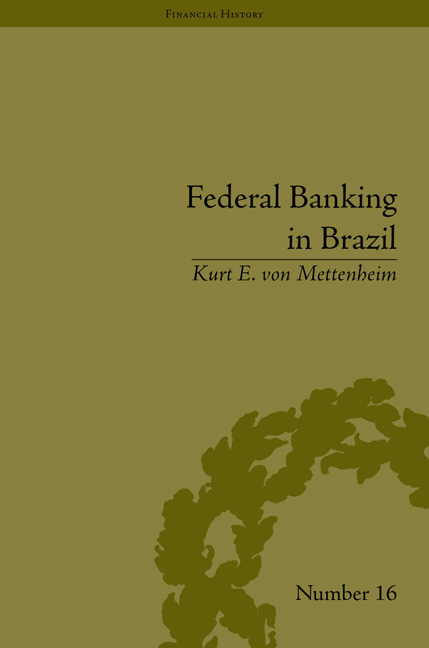Book contents
- Frontmatter
- CONTENTS
- Acknowledgements
- List of Figures and Tables
- Introduction
- 1 Government Banking Theory
- 2 Bank Change in Brazil
- 3 The Banco do Brasil – with Maria Antonieta del Tedesco Lins
- 4 The Caixa Economica Federal (Federal Savings Bank)
- 5 The Banco Nacional de Desenvolvimento Econômico e Social (National Bank for Economic and Social Development, BNDES)
- Conclusion
- Notes
- Works Cited
- Index
5 - The Banco Nacional de Desenvolvimento Econômico e Social (National Bank for Economic and Social Development, BNDES)
- Frontmatter
- CONTENTS
- Acknowledgements
- List of Figures and Tables
- Introduction
- 1 Government Banking Theory
- 2 Bank Change in Brazil
- 3 The Banco do Brasil – with Maria Antonieta del Tedesco Lins
- 4 The Caixa Economica Federal (Federal Savings Bank)
- 5 The Banco Nacional de Desenvolvimento Econômico e Social (National Bank for Economic and Social Development, BNDES)
- Conclusion
- Notes
- Works Cited
- Index
Summary
For almost three decades since its creation in 1952, the National Bank for Economic Development (BNDE) set new standards for institutionalization that had a broad impact on the economic bureaucracy and policy-making in general. The bank set the standard for administrative professionalism and its técnicos gained a reputation as among the most competent in Brazil. Managers codified bank procedures and defended them and the bank in intrastate politics. The BNDE also developed a distinctive mentality of nationalist developmentalism that informed its policies and policy battles.
R. Schneider, Politics within the State: Elite Bureaucrats & Industrial Policy in Authoritarian Brazil (Pittsburgh, PA: University of Pittsburgh Press, 1991), p. 35.The BNDES is a paradigmatic development bank. The trajectory of the BNDES involves a sequence of policies and business practices that have shaped Brazilian development. During the 1950s, the BNDE supplied directed credit for transportation, electric energy, infrastructure and steel production. During the 1960s, the bank diversified under financial reforms. During the 1970s, the BNDE helped complete state-led import substitution industrialization by channelling foreign finance and forced savings into capital goods, project lending and regional development programmes. During the 1980s, the bank shifted away from public investment because of fiscal crisis and foreign debt. During the 1990s, the BNDES became agent for privatization of state owned enterprises. The bank remained virtually the only domestic source of long-term finance during a decade of financial crises in emerging markets (1994–2003).
- Type
- Chapter
- Information
- Federal Banking in BrazilPolicies and Competitive Advantages, pp. 145 - 172Publisher: Pickering & ChattoFirst published in: 2014

